
In the intricate landscape of digital marketing, A/B testing emerges as a powerful tool, especially on platforms like Meta Business.
This technique lets you compare two versions of a webpage to identify which one performs better. It’s especially valuable when refining landing pages to ensure maximum impact. Imagine you’re torn between two videos to feature in your landing page’s introduction. Which will captivate your audience more? A/B testing offers a solution. Here’s how to implement it:
Step-by-Step Guide to A/B Testing on Meta Business
Access Your Account: Sign in to your Meta Business account.
Pick a Campaign: Select an approved or ongoing campaign that directs to the ‘A’ version of your landing page.
Initiate A/B Test: Navigate to the A/B testing option and activate it.
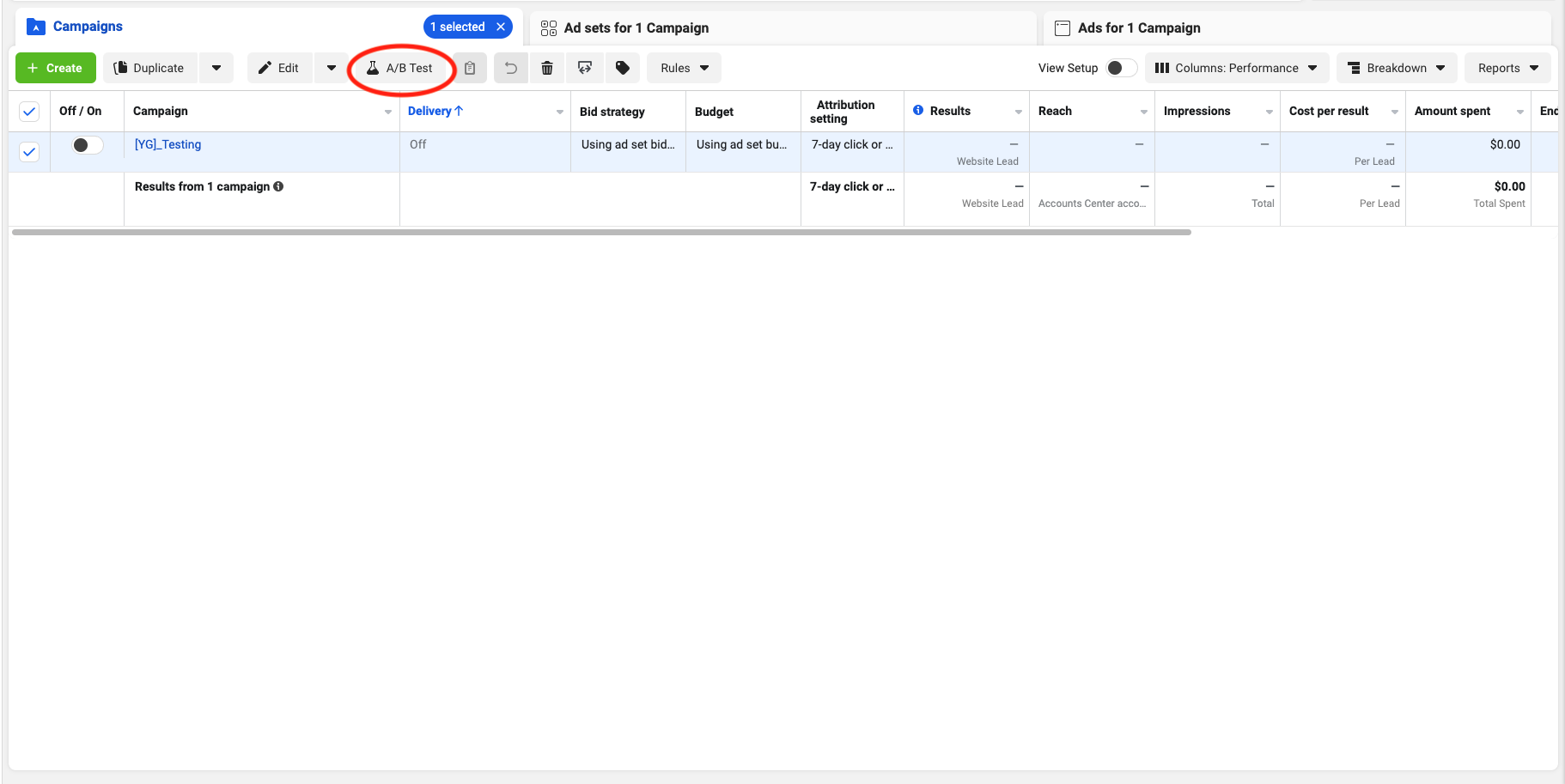
Clone your ad
Produce a copy of your primary ad.
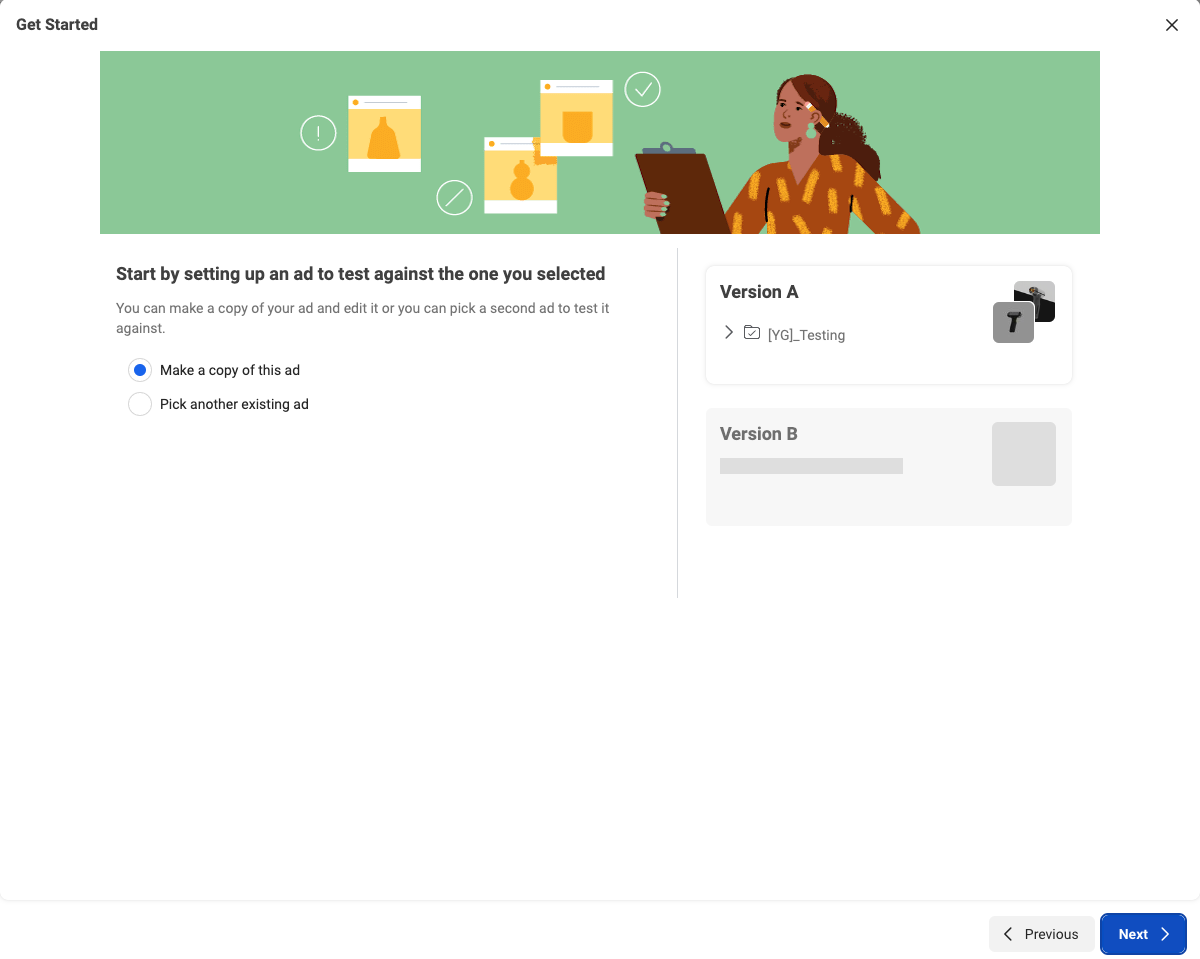
Select "custom" for the new campaign
It’s best to select custom and copy the settings we provide below.

Name your test
Name your test and choose “Cost per result – Website leads” as the key metric. Include upper funnel metrics in the test, and add CPC (cost per link click) as an additional metric. Set the duration of the test to last a minimum of 72 hours, but also enable the option to end the test early if there is a clear winner.
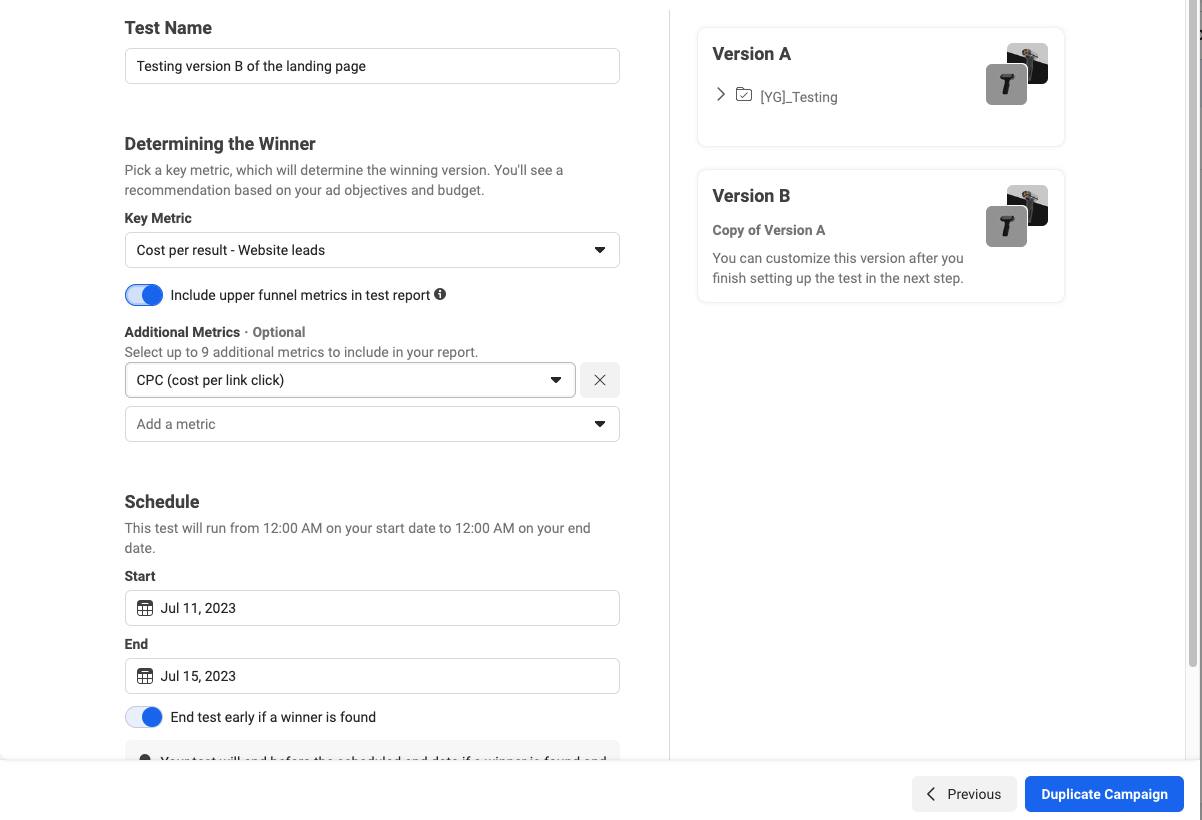
Duplicate & select
Duplicate the campaign.
Select the new campaign.
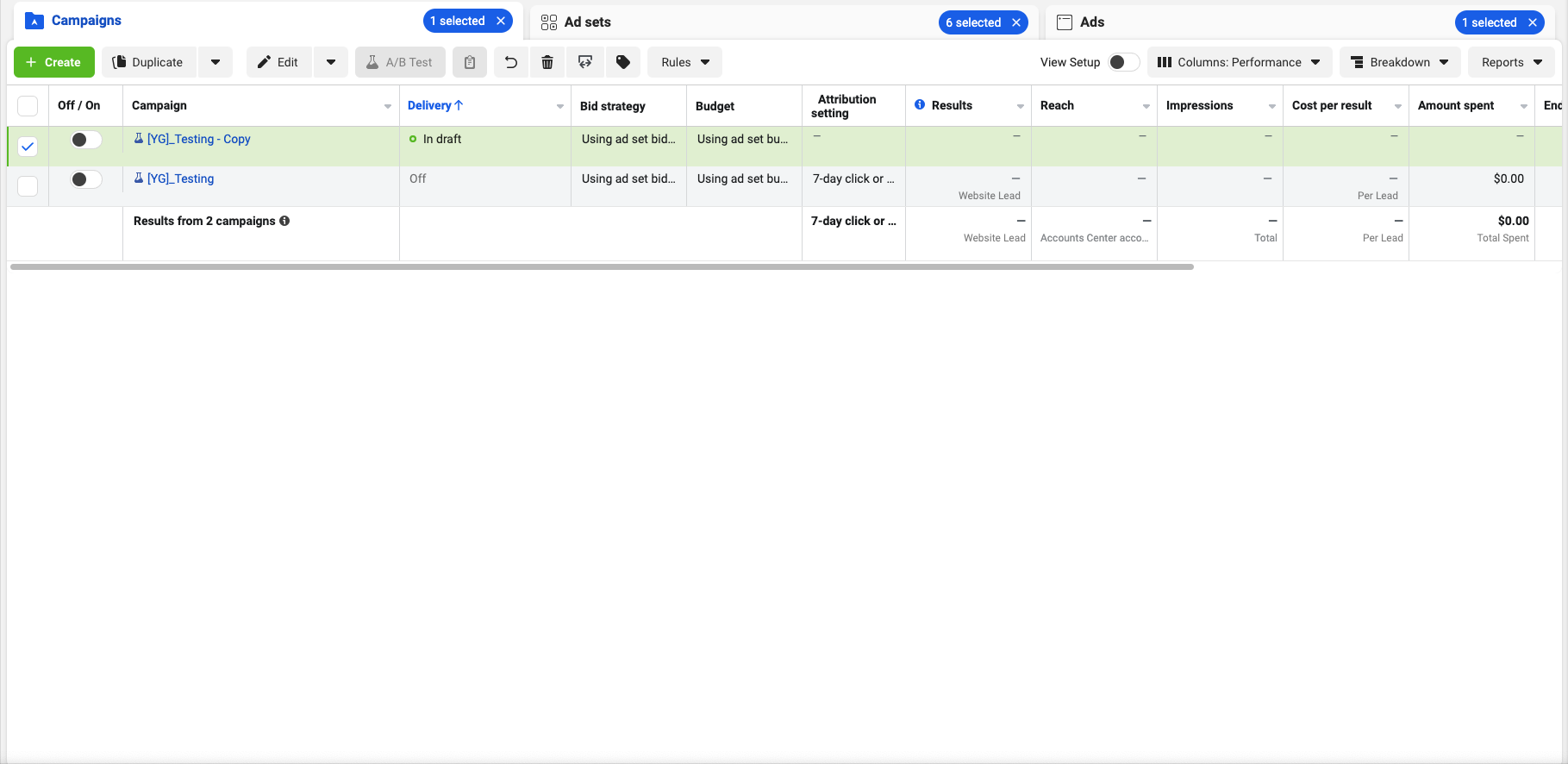
Change the URL
Navigate to the ad level. Choose all the ads for the new campaign and click on “Edit” for the website URL. Update the URL to the landing page version B.
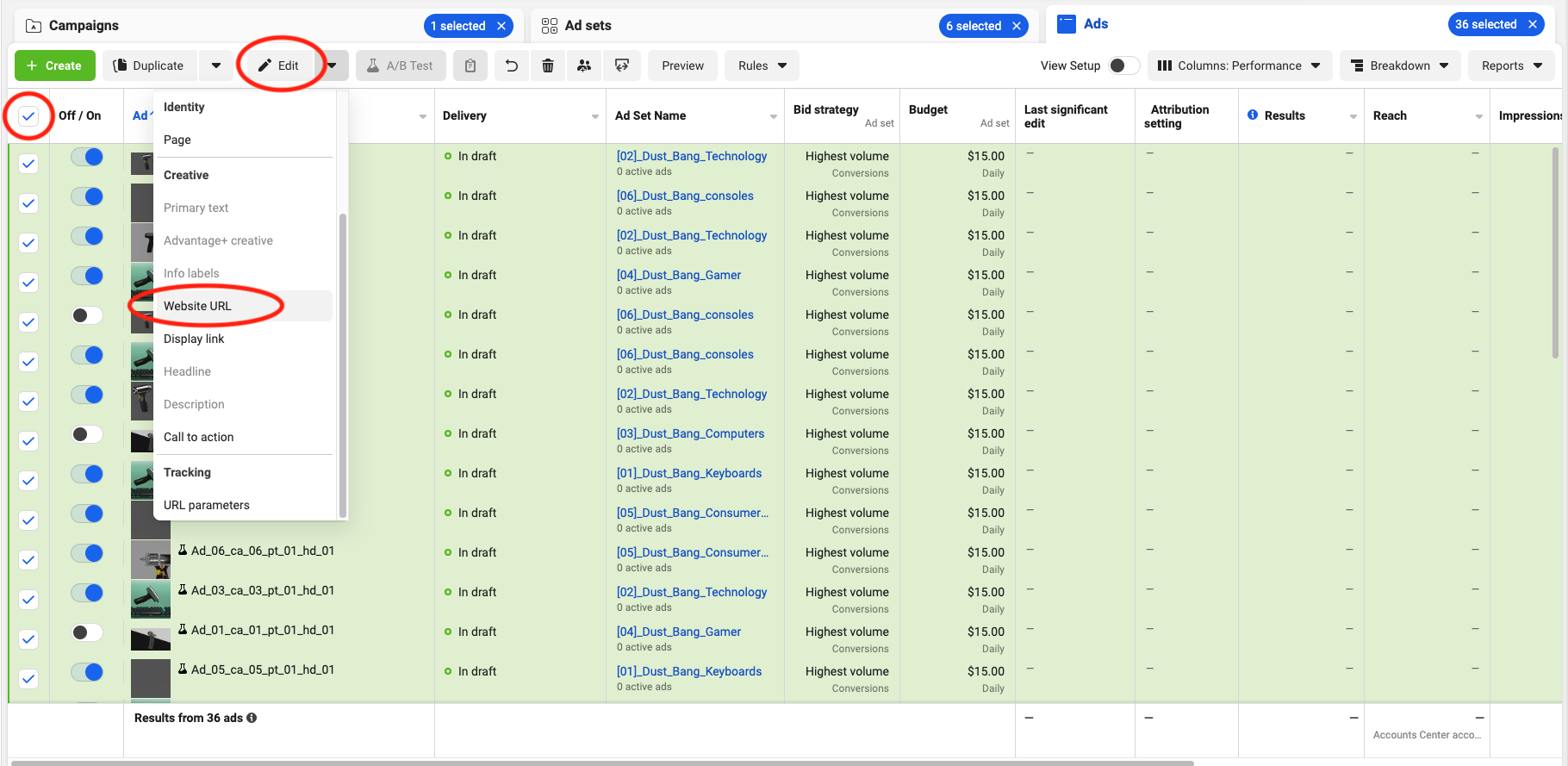
Modify URL parameters
Finally, you’ll need to adjust the URL parameters for each ad in the new campaign. You should identify each ad in a way that it is clear that it belongs to the B version. See the example below.

Lastly you should monitor the results of the campaign at least once a day. We don’t recommend making any changes to both landing pages during the test because this might affect the data. Once the test has been concluded Meta will send you an alert with the recommendations. Again make sure you verify the data, and take into account any possible factors that might have affected one of the campaigns.
